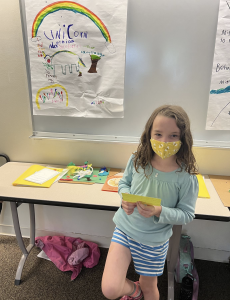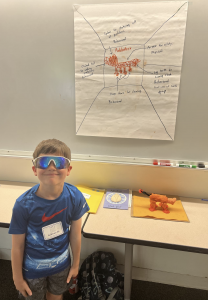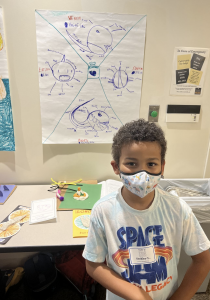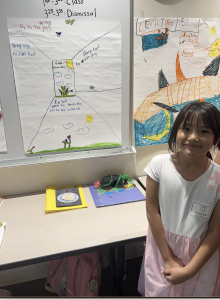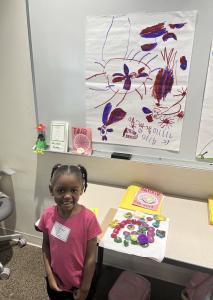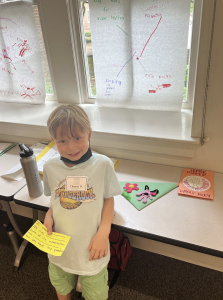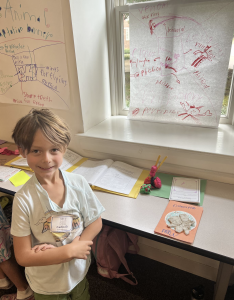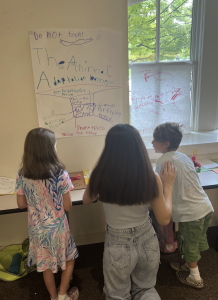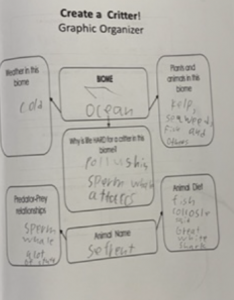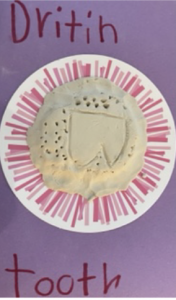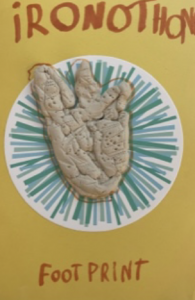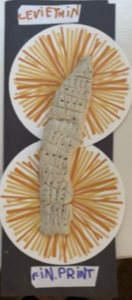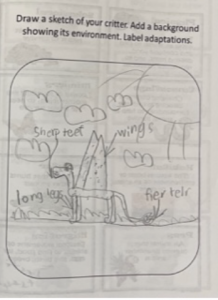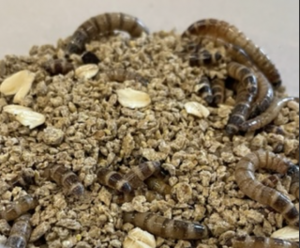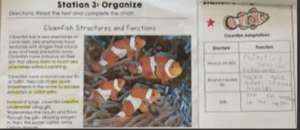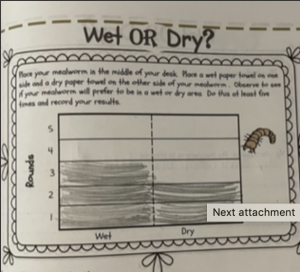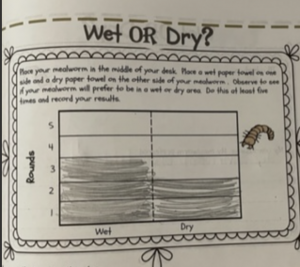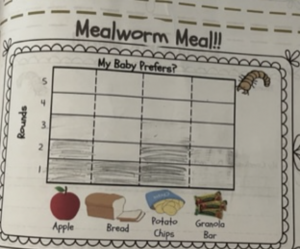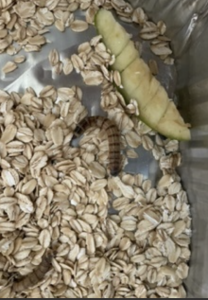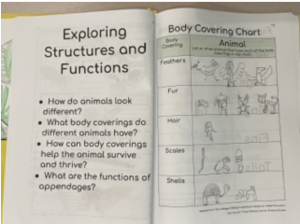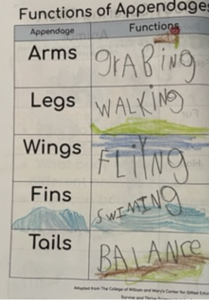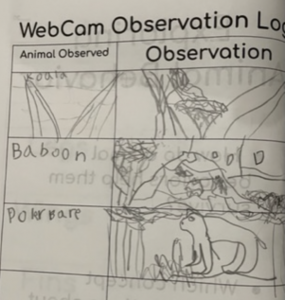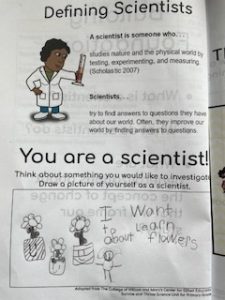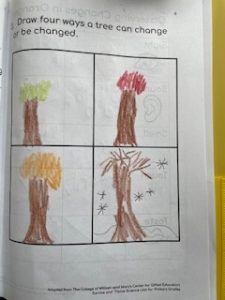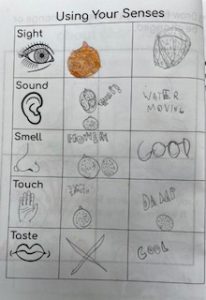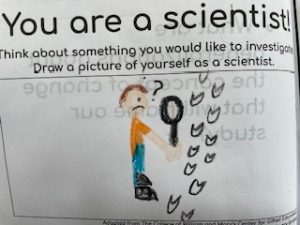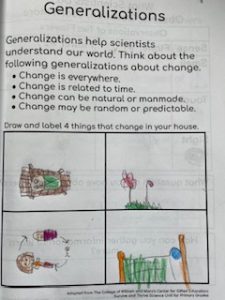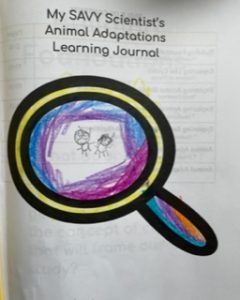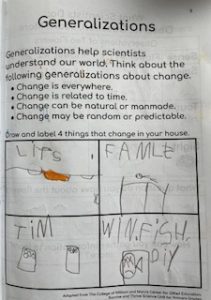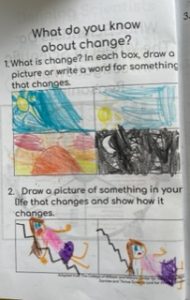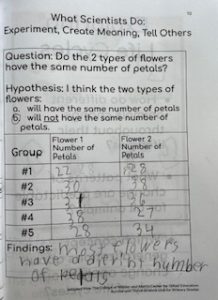Summer SAVY 2022/Session 6 – Animal Adaptations for Rising 1st/2nd Grade
Friday: Dear Parents,
What a Fabulous Friday we had! Students worked hard on finishing up their artifacts for our Amazing Animal Adaptation Museums. The exhibits included models of student created creatures, poster presentations showing at least 4 adaptations the animal needed to survive and thrive in its habitat, a fossil imprint, and a story. We had a great turn out for our museum, where visitors learned from our SAVY Scientist about some pretty creative animals with some AMAZING adaptations.
Below are a few questions you can ask to guide the discussion about your child’s final project:
- What environment does your animal live in?
- What are some of its adaptations?
- Are those adaptations behavioral or physical?
- What if your animal had to move to a different environment? How may it have to adapt to survive in a new habitat?
Thank you for sharing your bright, inquisitive, and truly delightful children with us! We hope they had a great time and that their experience this week will encourage further inquiry.
Sincerely,
Ms. Davidson and Ms. Esther
Thursday:
Today, students had an opportunity to tap into their creativity! After learning more about physical and behavioral animal adaptations, students were challenged to create a creature with features that allow for its survival. The planning process involved identifying the creatures: biome, diet, predator, and prey. Students were challenged sketch and label at least 4 adaptations that allow the invented animal to survive and thrive. Most students finished the planning process and began making a model of their creature. We also learned about how fossils help scientists learn about past species. Students made a model of a fossil that their invented creature may leave behind. Tomorrow, students will add more details to their models and will write about their creatures experiences and adaptations. All of their creations will be displayed in our Animal Adaptations Museum, where they will be the experts. We are excited to see these great minds sharing their expertise!
Ms. Davidson and Ms. Esther
Wednesday:
We had a fun, engaging day of learning! In the morning, students rotated through five “Adaptation Stations” where they worked on a variety of activities in small groups. For example, they read and synthesized information to build an understanding the structures are body parts that help animals with necessary functions (such as movement, eating, and protection). They also explored structures and functions of penguins, camels, and pythons. In another station, students organized information about structures that clownfish have for protection, movement, and breathing. One of the favorite activities was reading about Death Valley and common adaptations needed for desert life, then extending learning by drawing an invented animal and explaining structures and features.
In the afternoon, we began out mealworm investigations! We observed the mealworms and conducted two experiments about their preferences. The first was investigating which food they preferred when presented with an apple, potato chips, a granola bar, and bread. The second investigated whether they prefer wet or dry areas. Students practiced making a hypothesis and explaining their reasoning. Data was collected in small groups, then compiled to look at trends and draw conclusions. Students began asking further questions about mealworms and discussing how they may set up experiments to answer their questions. Our SAVY scientists have some great ideas that we look forward to hearing more about tomorrow!
Ms. Davidson and Ms. Esther
Tuesday:
We had an exciting day building on the concept of change as we explored life cycles, biodiversity, and features that allow animals to survive and thrive in their environments! Students learned about complete and incomplete metamorphosis in insects, and studied and compared the life cycles of butterflies, frogs, and chickens. They also explored different body coverings, categorized animals by body covering, and identified the purpose of each. Students identified how appendages (arms, legs, wings, fins, tails) help animals move in different ways. We ended our day by taking a virtual field trip to the SanDiego Zoo! Our SAVY Scientists watched webcam footage and recorded observations of a koala bear, baboons, and a polar bear. It was a great day of learning! We look forward to tomorrow!
-Ms. Davidson and Ms. Esther
Monday:
It was such a pleasure to meet this amazing group of young SAVY Scientists! Today we built the foundation to frame our study of animal adaptations.
Students developed an understanding of the macro-concept of change through identifying changes in their own lives and observing and recording changes in an orange using their 5 senses. We identified 4 generalizations about change: 1) change is everywhere, 2) change is related to time, 3) change can be natural or manmade, and 4) change can be random or predictable. Our study of change was related to life cycles, which we will delve into deeper tomorrow.
Students also explored what scientists are and how they use scientific investigation and reasoning to answer questions or solve problems. They were introduced to science process skills and used these skills to conduct a simple scientific investigation to determine whether different types of flowers have the same or different number of petals. After collecting data from 2 flowers, they surveyed other students to compare results. Class data was compiled by making a line plot and we looked for trends.
The foundational understanding of change and the scientific method will support a deeper understanding of animal adaptations as our week continues. I look forward to another great day tomorrow!
